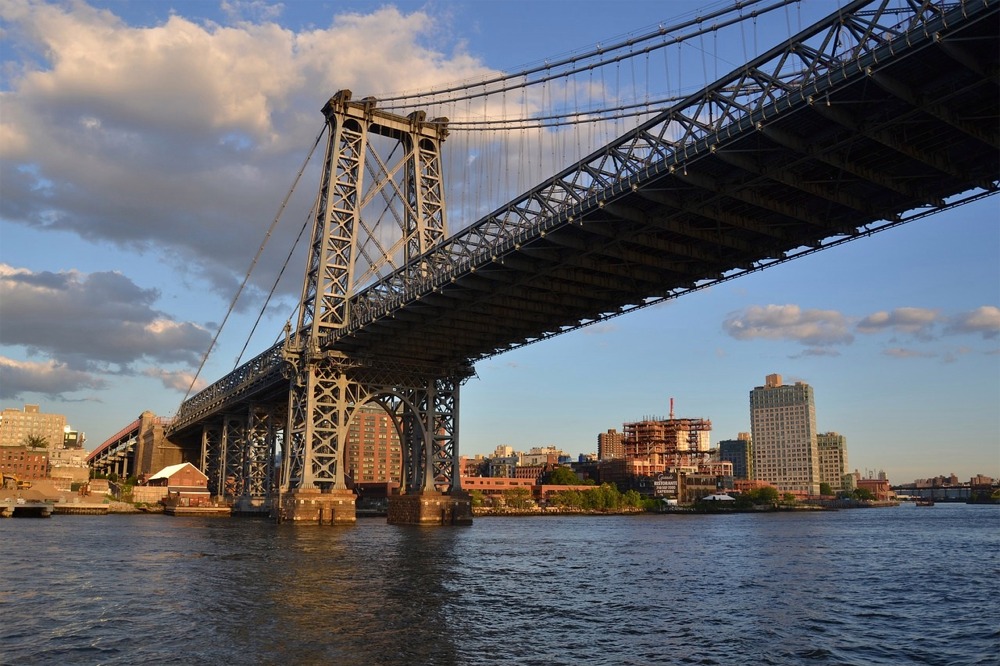Williamsburg Bridge
Home > New York State Photographs > New York > Williamsburg Bridge

The East Pier of the Williamsburg Bridge was bathed in a soft, golden light as the sun descended towards the horizon. The air had a slightly salty tang in it, carrying with it the faint aroma of the East River mingled with the smell of the city. A few large, billowy clouds had begun to drift across the otherwise blue sky, and a gentle breeze ruffled the surface of the river, sending small ripples against the pier.
On the bridge itself, the afternoon rush of foot and bike traffic had begun to dwindle, leaving the pier relatively quiet. At the far end of the river, a small boat bobbed up and down, its occupant seemingly oblivious to the picturesque surroundings.
For a moment, the scene was still and almost silent, like a painting come to life.
Williamsburg Bridge
The Williamsburg Bridge is a major suspension/truss bridge that spans the East River, connecting the boroughs of Manhattan and Brooklyn in New York City. It is one of the city's most important and iconic bridges and serves as a vital transportation link for commuters, pedestrians, and cyclists.
History
The construction of the Williamsburg Bridge began in 1896 and was completed in 1903. The bridge was designed by engineer Leffert L. Buck and Henry Hornbostel was the Architect. At the time of its completion, the Williamsburg Bridge was the longest suspension bridge in the world, with a main span of 1,600 feet (490 meters).
Architecture
The bridge's design is characterized by the pattern of steel in the truss framework and distinctive towers in conjunction with the suspension cables. The towers stand at each end of the main span of the bridge and support the main suspension cables. The bridge's overall length is approximately 7,308 feet (2,227 meters).
Connectivity
The Williamsburg Bridge carries multiple modes of transportation. It has a total of four lanes for motor vehicle traffic in each direction, allowing for efficient movement of cars, buses, and trucks between Manhattan and Brooklyn. Additionally, the bridge accommodates 2 tracks of the trains of the New York City Subway plus pedestrian walkways and bike lanes.
Importance
The Williamsburg Bridge plays a crucial role in the transportation infrastructure of New York City. It provides a direct route for residents and commuters between Manhattan and Brooklyn, easing traffic congestion and facilitating the movement of people and goods.
Cultural Significance
Beyond its functional purpose, the Williamsburg Bridge holds cultural significance for the communities it serves. The bridge has been featured in various films, literature, and artworks, becoming an iconic symbol of the city's skyline and a part of its cultural heritage.
Rehabilitation
Over the years, the Williamsburg Bridge has undergone several renovations and rehabilitations to maintain its structural integrity and ensure the safety of its users. These efforts have helped preserve the bridge's historic character while adapting it to meet modern transportation needs.
The Williamsburg Bridge continues to be a vital link in New York City's transportation network, offering stunning views of the East River and the city's skyline. It remains an integral part of the daily lives of countless residents and visitors, serving as a testament to the engineering achievements of its time and an enduring icon of New York City's rich history.


